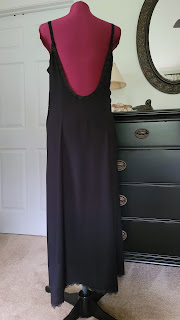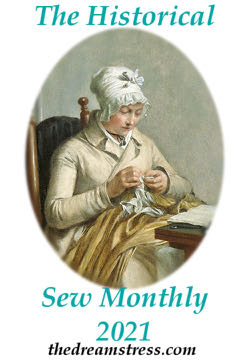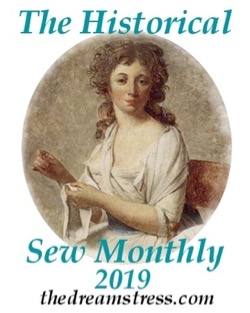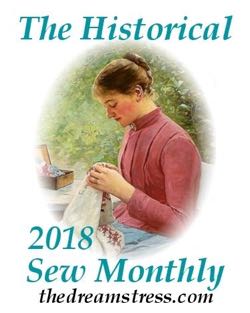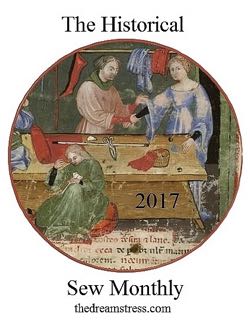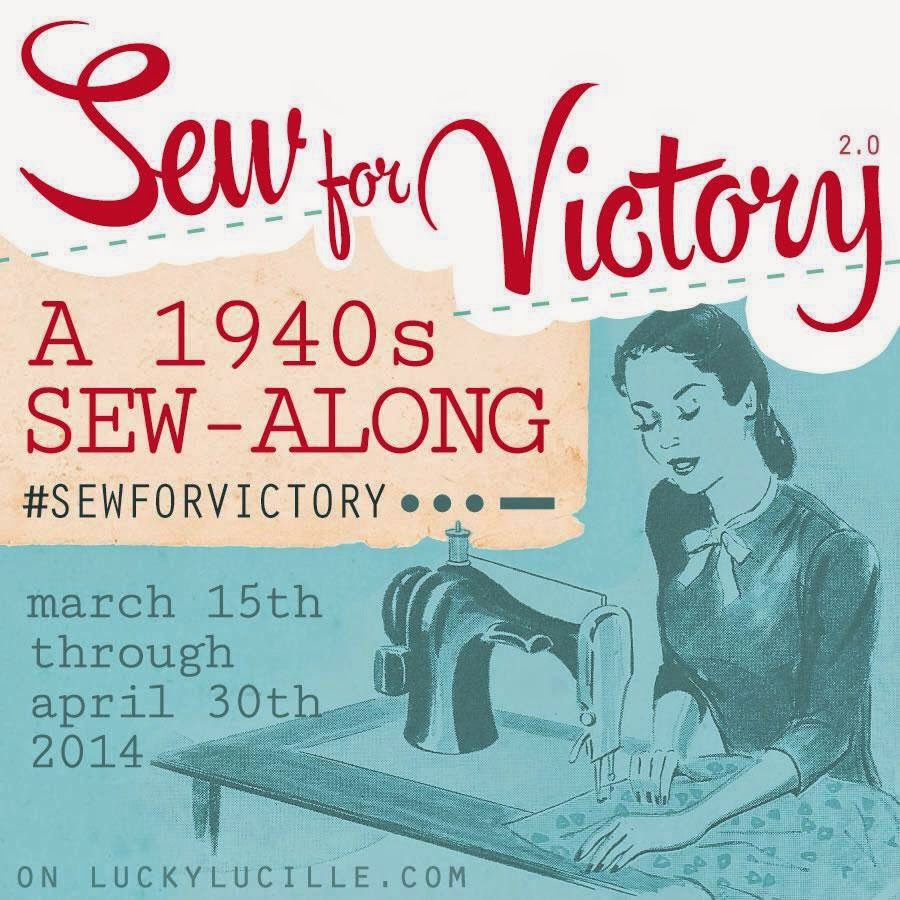Companion YouTube Video: https://www.youtube.com/watch?v=BwXTFesL3Nc
This is the second of three blog posts and companion YouTube videos for the 1930s Underthings for a complete1930s Wardrobe.
Blog Post: https://theperfecttouchvictorian.blogspot.com/2023/05/sewing-1930s-bras-and-tap-pants.html
YouTube Video: https://www.youtube.com/watch?v=iH9kosTz4ns
In the first blog post and video for the 1930s Underthings I made four sets of bras and tap pants from several different patterns. White rayon, blue silk, black rayon, and black and white rayon. I'll share links in the description for you to read and/or watch.
1930s Slips - A Wardrobe Staple
Now it's time to make what was once an important piece of lingerie - the slip. Again, using Stella Blum's Everyday Fashions of the Thirties As Pictured in Sears Catalogs as reference and inspiration.
What was the purpose of this item that was a wardrobe staple for generations? A slip serves a purpose similar to a lining. It adds an extra layer under a sheer dress. It is a barrier to allow clingy materials and knits to hang freely rather than sticking to the body. It smooths and shapes the body by minimizing the appearance of small bulges and imperfections and the inner foundation layers. It is a layer between any scratchy outer fabric. And it can add a layer of warmth.
I'm using two patterns for my slips. and similar rayon and silk fabrics used for the bras and tap pants.
The 1930s Art Deco Slip by The Historically Adequate Atelier - Black
With black thread still in the sewing machine I began by sewing a black rayon slip from The 1930s Art Deco Slip by The Historically Adequate Atelier on Etsy. "A digitized version of a mid 1930s under-slip that features lovely art deco, geometric details indicative of the period." This was a single size, downloadable pattern, and very easy to print and assemble.
The pieces are cut from black rayon fabric adding seam allowances to the pattern. The front is cut on the fold, the back is in two pieces. There is a center front insert cut on the fold, and front and back hem facings cut on the fold. Straps are made from your choice of fabric or ribbon and cut to your desired length.
The center back seam is sewn closed. Then the side seams are sewn closed leaving the opening for a side placket and closure.
I had added 1/2" seam allowances to the pattern. For all seam finishes I pressed the seam open and then stitched the allowances down 3/8" from the seam.
My brain was on vacation the day I made this slip and I didn't leave the side vents open when I assembled the facings at each side. While I didn't discover my mistake until later, it would be an easy fix - if I every decide to take the time. What are the odds of that truly happening? The upper edge is pressed turning in the 1/2" seam allowance.
The facing is sewn to the lower edge of the slip and topstitched to secure the upper edge.
For the black bra and tap pants I had used a lace folded over the raw edges and used that same lace for the top edge of the slip. An insertion lace in my stash was a wonderful match to that lace and I used a red satin ribbon for a touch of color.
The lace is pinned to the slip and sewn by machine at each edge of the red ribbon at the front insert and over the topstitching at the hem.
The insertion lace with ribbon is also used for the straps.
The placket is sewn to the side opening according to the pattern instructions and snaps are sewn for closures.
A finished slip! And I love the design and the red ribbon and lace.
1930s Art Deco Slip - The Historically Adequate Atelier on Etsy - White
The fit is beautiful for the black slip and I decide to use the same pattern with white rayon fabric. I cut the front, back, and facings and front insert.
The insert is sewn into the center front.
The straps are sewn with a 2" strip of fabric sewn right sides together, the seam allowance trimmed, and the tube turned right side out.
While looking through the trim stash I find an applique that I had purchased for a different project but it didn't have the right historic feel for that project. But it does have the perfect vintage feel for this one and is also a perfect fit for the front of this slip.
I hand sew the applique to the slip front.
The center back seam and side seams are sewn closed leaving an opening in one side seam for the placket and closures.
Snaps are sewn into the placket.
The applique adds so much to the slip that I decide to keep the remaining finishes simple. I press all raw edges inside 1/2". Then I fold the raw edge to the pressing and create a 1/4" narrow hem and machine stitch. I use this method for the upper edge and hem. Then I sew on the straps and the white slip is finished!
Depew Patterns #3069 1930 Slip - Peach and Blue
The Depew Patterns #3069 1930 Slip has options for a straight or curved front, and a straight or low back. Seam allowances are already built into the pattern. I purchased this pattern on Etsy in downloadable pdf format and assembly was well instructed.
There are only three pattern pieces - front, back, and shoulder strap in two different lengths depending on the upper edge option selected.
Using the straight top edge front and back option, I cut this slip from a peach feather patterned silk crepe de chine hoping that while this is a nice slip, it will also be perfect for nightwear or even an easy summer dress or swim cover-up. The front and back are both cut on the fold.
The front bust and waist darts are marked and sewn.
Shoulder straps are sewn.
The side seams are sewn leaving the opening for a placket. Narrow hems are sewn in the upper and lower edges. The straps are attached as marked on the pattern.
The placket and snaps are added.
The peach slip, nightgown, summer dress, swim cover-up is finished!
Depew Patterns #3069 1930 Slip - Black Long
For evening wear I will need a long black slip and making it with a low back will suit several planned gowns.
I cut the pattern for the low back option.
The front is cut on the fold of black rayon fabric but I didn't have enough fabric to cut the back on the fold so I added seam allowance to the center back and cut two pieces.
The front bust and waist darts are marked and sewn.
The back waist darts are marked and sewn and the center back seam sewn.
The side seams are sewn leaving an opening for..............you guessed it!.............the placket!

The placket is added and the snaps sewn.
The upper and lower edges are finished with a narrow machine stitched hem.
Lace is added to the upper and lower edges.
I had made shoulder straps from the black rayon but came up with what I hope is a great idea. This slip will be worn under a black velvet gown with a shoulder and sleeve inset of white organza dotted with pearls. With snaps sewn to the top edge where the straps attach to the slip, I can use two different straps which will snap to the slip as needed. Wish me luck! And the long black slip is finished!
Finished Lingerie Sets
I've always loved coordinating lingerie sets and now there are four sets for the 1930s wardrobe with a bit of versatility for under day and evening wear. These sets should pack nicely and be lightweight for travel and wear.
Thank you for being here! The next blog post and video will be Part 3 of the 1930s Underthings. There is a 1930s corset with garters, a garter belt, and several surprises! See you then!
Love and hugs,
Jeanette
.jpg)







































































































